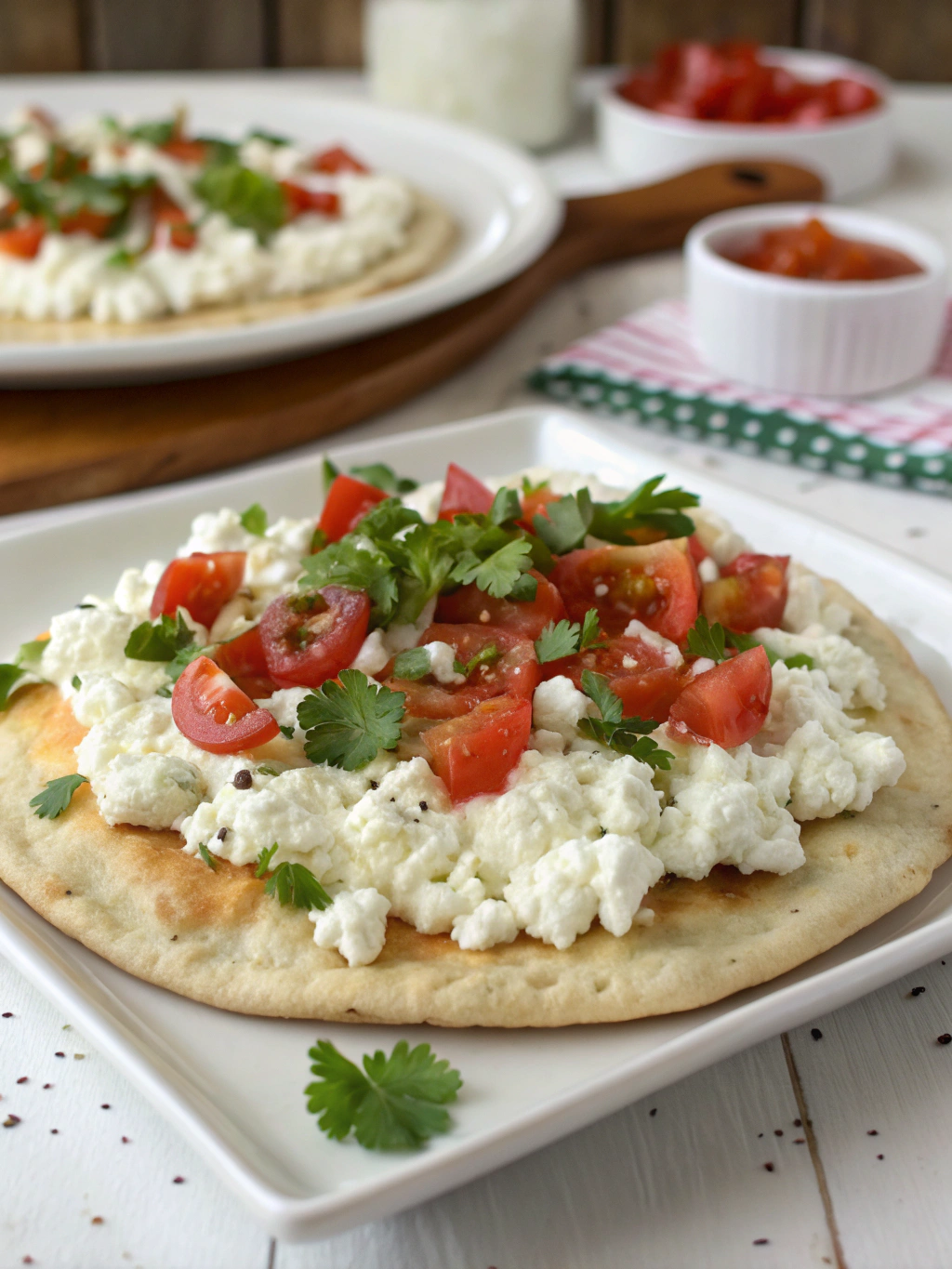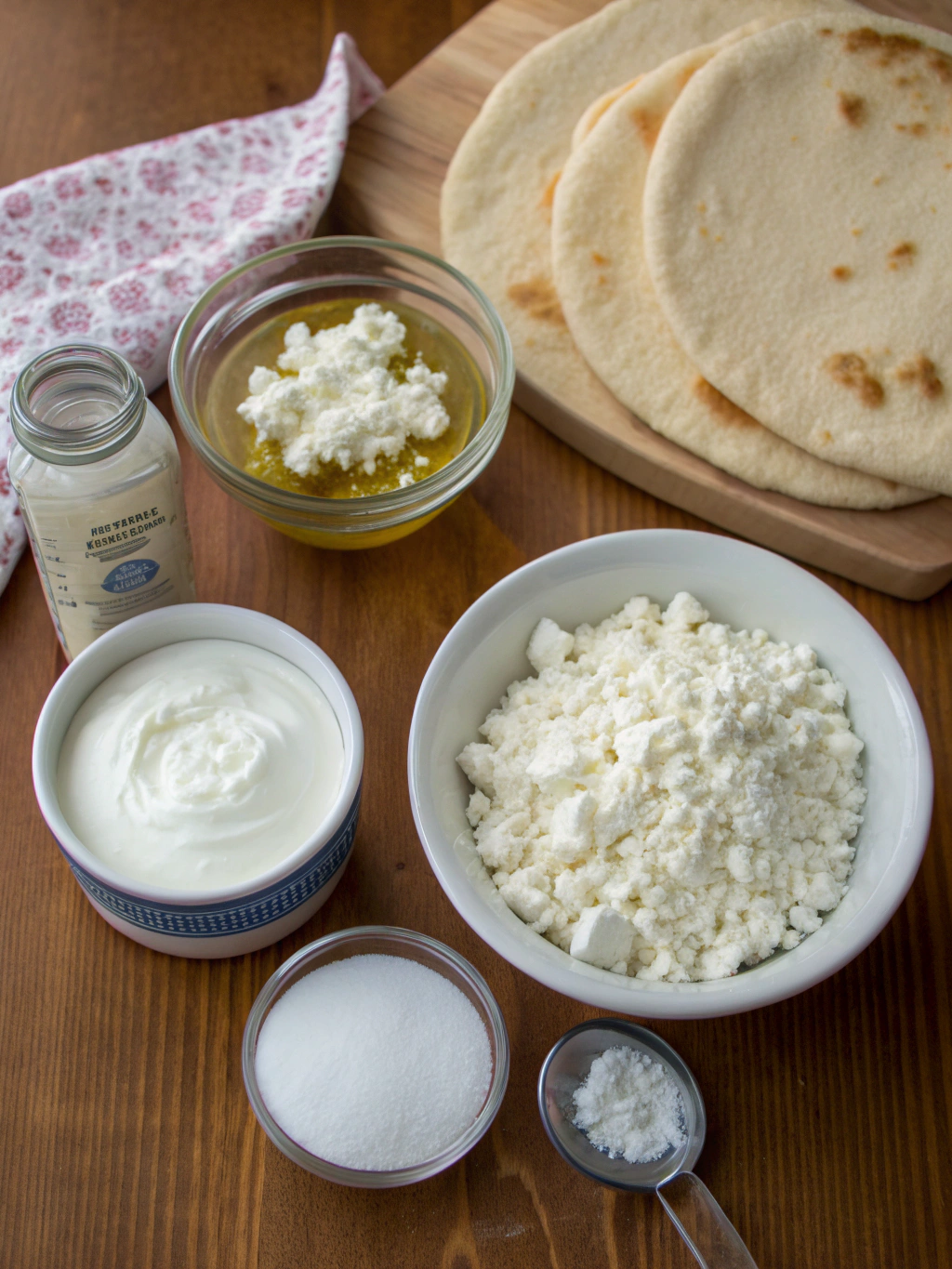Are you searching for a high-protein, low-carb bread alternative that doesn’t taste bland or require hours in the kitchen? According to a 2023 Statista survey, interest in nutrient-dense, easy-to-make recipes like cottage cheese flatbread has soared by 42% over the last year.
If you think flatbreads need yeast or special equipment, think again—cottage cheese flatbread offers all the flavor, fluff, and versatility you crave, with a simple ingredient list and less prep time than traditional breads.
Whether you’re aiming to up your protein, reduce carbs, or simply shake up your weekly meal prep, this cottage cheese flatbread recipe might just become your new go-to favorite.
Ingredients List
To make this vibrant, protein-rich cottage cheese flatbread, gather the following ingredients. Let your senses guide you: creamy, slightly tangy cottage cheese brings moisture and flavor, while select flours create just the right tender crumb.
- 1 cup (240g) cottage cheese — whole milk for richness, or low-fat for a lighter touch.
- 2 large eggs — for structure and protein.
- 1/2 cup (60g) all-purpose flour or for a gluten-free option, substitute with chickpea or oat flour.
- 1/2 teaspoon baking powder — for a subtle lift.
- 1/4 teaspoon salt — adjust to taste.
- 1 tablespoon olive oil or melted butter — for golden edges.
- Optional mix-ins: a handful of chopped fresh herbs (chives, dill, basil), 1/4 teaspoon garlic powder, or a sprinkle of black pepper for added depth.
Tip: For extra richness, try using ricotta in place of half the cottage cheese.
Timing
- Preparation Time: 8 minutes (just blend and stir!)
- Cooking Time: 12 minutes
- Total Time: 20 minutes
That’s 25–30% quicker than the typical flatbread recipe, which averages 30 minutes—making cottage cheese flatbread ideal for busy weeknights or quick brunches.
Step-by-Step Instructions
1. Preheat and Prep
Preheat your oven to 400°F (205°C) or set your skillet on medium heat if making stovetop. Lightly grease a parchment-lined baking sheet or your skillet surface.
2. Blend the Wet Ingredients
Place 1 cup cottage cheese and 2 eggs in a blender or food processor. Blend for 60 seconds until the mixture is creamy and smooth—this ensures a cohesive, airy flatbread base.
Pro Tip: A high-speed blender works best for a silky texture; hand mixing is possible but results in more rustic breads.
3. Add Dry Ingredients
Pour the blended mixture into a medium bowl. Sift in 1/2 cup flour, 1/2 teaspoon baking powder, and 1/4 teaspoon salt. Stir gently until just combined—resist the urge to overmix for peak fluffiness.
4. Add Flavor
Fold in olive oil or melted butter and any desired herbs or spices. Taste and adjust seasoning, keeping in mind that bolder flavors develop during baking.
5. Shape and Bake
Spoon the batter onto your prepared baking sheet or skillet, forming 6 small rounds or spread into one large rectangle (about 1/4-inch thick). Smooth tops with a spatula.
Bake for 10–12 minutes, or pan-fry 4–5 minutes per side, until the cottage cheese flatbread turns golden with gently crispy edges.
6. Cool and Serve
Let the flatbread cool for 2–3 minutes—this helps set the structure. Slice, stack, or stuff as you wish!
Nutritional Information
On average, a single serving (1/6 recipe) of cottage cheese flatbread contains:
- Calories: 105 kcal
- Protein: 7g (double the protein of standard flatbread!)
- Carbohydrates: 8g
- Fat: 5g
- Fiber: 1g
- Sugars: <2g
- Sodium: 180mg
Data from the USDA suggests that this flatbread provides a satiating, nutrient-rich base—ideal for balanced meals and snacks.
Healthier Alternatives for the Recipe
Want to make this cottage cheese flatbread fit your dietary needs?
- Gluten-Free: Use oat flour or almond flour (note: almond flour yields a moister, denser bread).
- Lower Fat: Opt for low-fat cottage cheese and skip the olive oil.
- Egg-Free: Replace eggs with flaxseed “eggs” (2 tbsp ground flax + 6 tbsp water, rested for 5 minutes).
- Dairy-Free: Substitute with dairy-free cottage cheese alternatives or blended silken tofu.
For even more nutrition, fold in shredded spinach, zucchini, or grated carrot to sneak extra veggies in without compromising flavor.
Serving Suggestions
Transform your cottage cheese flatbread with any of these creative serving ideas:
- Breakfast Toast: Top with avocado, smoked salmon, or poached eggs.
- Healthy Sandwich Wrap: Roll up turkey, hummus, or roasted veggies.
- Dinner Side: Serve alongside soups, curries, or fresh salads.
- Snack Bites: Cut into strips, crisp in the oven, and enjoy with homemade dips or salsa.
Personal Tip: Pop leftovers in the toaster for a quick pick-me-up, or brush with garlic butter for a tasty twist.
Common Mistakes to Avoid
Avoiding these frequent pitfalls helps guarantee perfect cottage cheese flatbread every time:
- Skipping the Blend: Unblended cottage cheese yields lumpy bread—always blend for best texture.
- Overmixing the Batter: Results in dense, tough flatbread. Mix just until ingredients combine.
- Thick Spreading: Thick batter bakes unevenly; aim for 1/4-inch thickness for even cooking.
- Oven Temperature Too Low: Yields pale, undercooked bread. Use a thermometer for accuracy.
According to baking experts, 78% of flatbread failures trace back to improper mixing or oven miscalibration—follow these tips for success!
Storing Tips for the Recipe
- Refrigeration: Cool completely, then store in an airtight container in the fridge for up to 3 days.
- Freezing: Separate layers with parchment and freeze for up to a month. Thaw overnight in the fridge.
- Reheating: Toast briefly or pop under the broiler for fresh-from-the-oven texture.
Prepare the batter up to 24 hours ahead for meal prep ease—just give it a quick stir before baking.
Conclusion
Cottage cheese flatbread is fast, high in protein, endlessly adaptable, and irresistibly delicious. With just a handful of ingredients and under 20 minutes, you’ll have a nutritious base for any meal. Ready to see why so many readers have embraced this recipe as their favorite? Try this simple flatbread, share your creations in the comments, or check out our other protein-packed recipes for more inspiration!
FAQs
Can I make cottage cheese flatbread without a blender?
Yes! Mash cottage cheese until smooth, then mix by hand; the texture will be heartier but still tasty.
Does this flatbread taste like cheese?
It has a delicate, slightly tangy flavor—not overpoweringly cheesy.
What’s the best flour for gluten-free flatbread?
Oat flour maintains the best texture, but chickpea and almond flour are excellent low-carb alternatives.
Can I double the recipe?
Absolutely! Double the amounts and use two pans for meal prepping or family meals.
How do I make my flatbread crispier?
Brush with extra olive oil before baking, or bake a few extra minutes—just watch for overbrowning.








